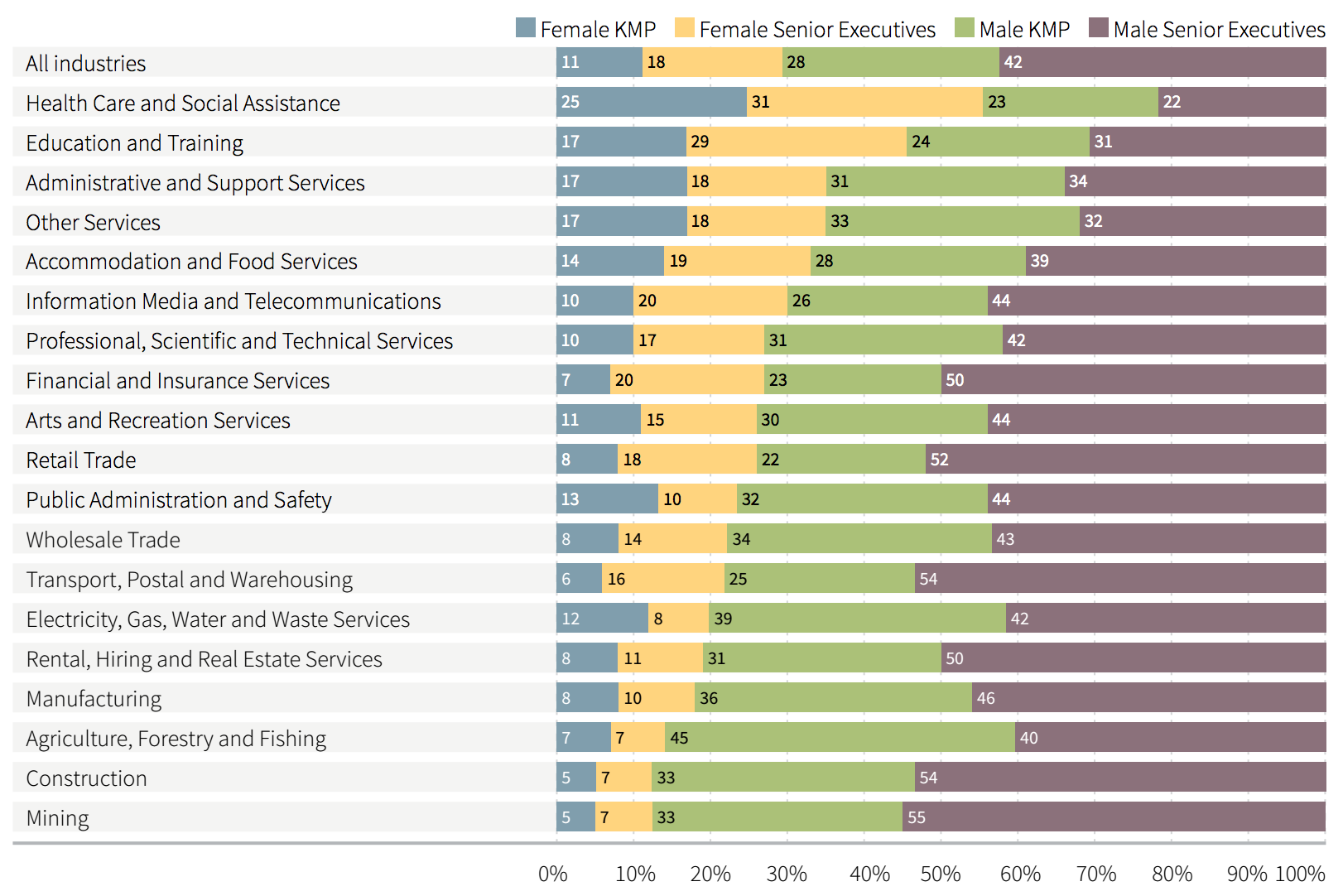08/03/2017
What a blessed life – males get more pay if they have too few or too many female bosses
The second report in the BCEC|WGEA Gender Equity Insights series was published last week. It seeks to add to and strengthen the evidence base that exists around gender pay gaps in Australian workforces. The report uses unique data reported to the WGEA, capturing 4 million employees and more than 12,000 employers in the 2015-16 reporting period.
The findings are stark. The pay gaps are significant. And the sheer scale of addressing it will remain a huge challenge when just looking at the issue, for example, in terms of the pipeline of women for leadership positions, and the segregation of the genders by industry.
This article summarises the report’s key findings, and considers the current state of pay inequality between leaders just because of their gender.
Greater balance in leadership drives reduced gender pay gaps
Increasing the representation of women in executive leadership roles is associated with lowering gender pay gaps. Organisations with the lowest share of female executive leaders have an average gender pay gap double the size of those with an equal share of women in senior roles: 20% compared with 10%. Organisation-wide reductions in the gender pay gap were recorded for those companies that improved gender balance at the executive leadership level between 2015 and 2016. Leadership in this case means KMP personnel at board and executive level, plus other senior management. Organisations that increased the share of women in executive leadership roles by more than 10% recorded a reduction in the organisational gender pay gap of 3 percentage points over the course of a single year.
The pay gap is evident from the start – graduate pay
Gender pay gaps for those participating in a graduate program are minimal, but men are more likely to receive top graduate trainee salaries. Overall, the median gender pay gaps for full-time graduate trainees are 2.9% on base salary and 2.1% on total remuneration. However, the gender pay gap for graduate trainees progressively widens among the top echelons of salary earners. The highest-paid 10% of women in graduate trainee positions receive at least $81,000 in base salary, whereas the highest-paid 10% of male graduate trainees took home at least $88,000 – this equates to a pay gap of 8.0%. Women are consistently under-represented in the highest graduate salary bands, with some 18% fewer women paid over $80,000 compared to their share of the graduate workforce.
Managerial gender pay gaps fall as the share of female managers increase
The average gender pay gap declines as female representation among management increases. The managerial gender pay gap falls steadily from around 15% in total remuneration among companies where a 20% of managers are female, to 8% for organisations where 80% managers are female.
Except for organisations with the highest concentrations of female managers
However, gender pay gaps are seen to rise sharply in workplaces with the highest concentrations of female managers. For organisations with a greater than 80% share of female managers, the management gender pay gap rises from around 8% to more than 17% in favour of men.
Even providing part-time management jobs favours men
For part-time managers, women earn on average 27.1% less than their male peers, with a wider gap of 34.7% in female-dominated work environments.
High pay for women a reflection of their rarity?
There appears to be efforts to rebalance gender participation by industry. But this has a cost. Australia’s most male-dominated industry delivers the highest pay to women. Women employed full-time in Mining earned on average $139,053 total remuneration in 2016. The next top-paying industries for women were Electricity, Gas, Water and Waste services ($106,100) and Banking and Finance ($105,438). The lowest paid industry for women was Retail Trade at $65,865. Women employed in the most female-dominated industry, Health Care and Social Assistance, earned on average $80,026. The pay difference is inversely correlated with the extent of women’s industry representation.
$93k pay gap at the top
The gender pay gap grows with level, climbing to 26.5% for Key Management Personnel (KMP), an annual difference of more than $93,000 in total remuneration.
The good news? The pay gap for all manager categories declined between 2015 and 2016, with the KMP pay gap reducing by a 2.2 percentage points. However, it is difficult to fathom why the extent of pay difference should be so significant at executive level.
Pay gaps among managers are exacerbated by the greater share of incentive pay awarded to men. For KMP, nearly $40,000 of the annual difference in pay is made up of additional remuneration including incentives.
From Guerdon Associates consulting work, it is evident that a potential cause is the nature of parental leave policies. Many companies need to review parental leave polices as it pertains to incentive eligibility and payment.
Reversing the situation – it will not be next year
While the report shows clearly is a range of well presented figures and graphs that pay inequality decreases as with the higher the proportion of women in management, the following graph indicates that achieving more balance in leadership roles will not happen next year.
Figure 1: Gender distribution of KMP and executives in companies: 2016, by industry
Reading through the report it is staggering the extent that it appears that companies are not effectively utilising the workforce’s talent and potential.
The BCEC|WGEA Gender Equity Insights report provides easy to understand graphics and summary statistics. It provides various data slices by industry, and can be utilised for benchmarking company pay equity performance.
It is suggested as recommended reading for all company directors. See it HERE.
© Guerdon Associates 2024 Back to all articles
Back to all articles


 Subscribe to newsletter
Subscribe to newsletter






